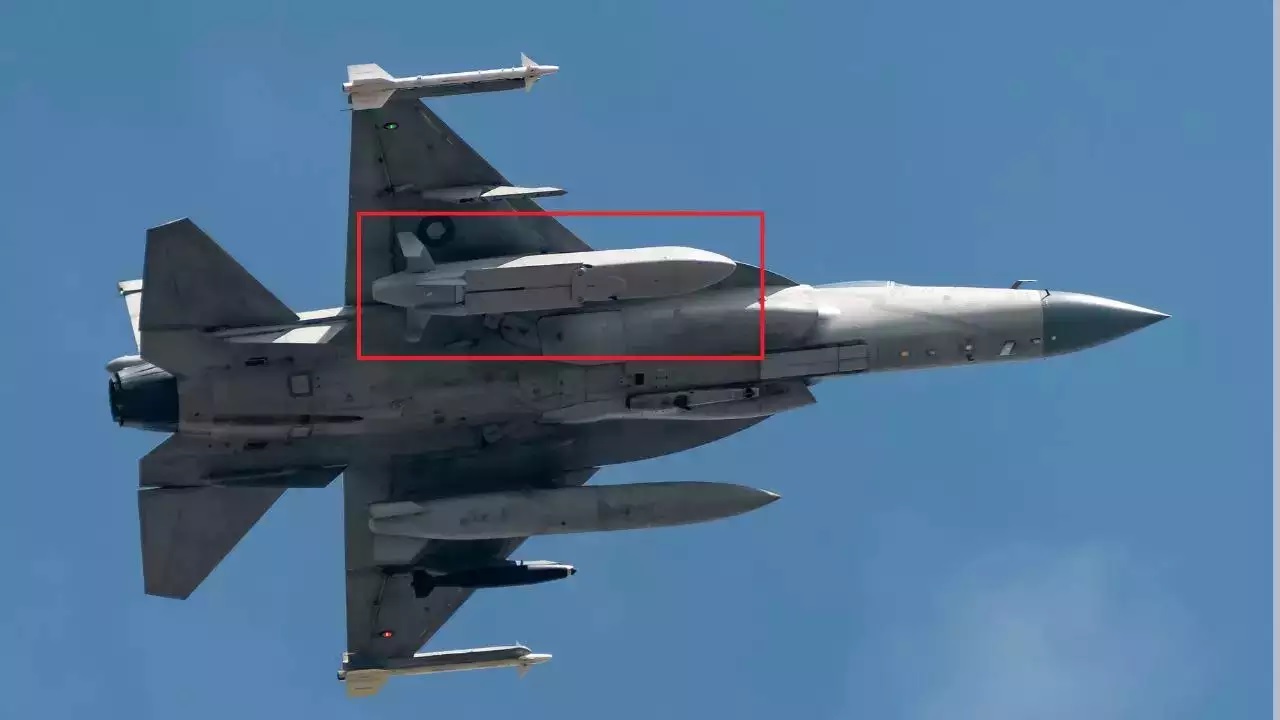JF-17 Thunder Takes Flight with RA'AD-I Nuclear Missile

In a recent and startling revelation, a photograph has surfaced confirming what many defense analysts have long suspected: Pakistan's JF-17 Thunder fighter jets are now equipped to carry tactical nuclear missiles. This significant development, verified by the Federation of American Scientists (FAS), marks a pivotal shift in the nuclear dynamics of South Asia.
The photograph, meticulously analyzed by experts, shows the JF-17 carrying the RA'AD I, Pakistan's sole nuclear-capable Air-Launched Cruise Missile (ALCM). The RA'AD I, first tested in 2007, is a versatile weapon designed for both conventional and nuclear missions. This capability leap comes as Pakistan moves to phase out its aging Mirage III/V aircraft, which previously bore the brunt of its air-based nuclear deterrence. Now, the JF-17 is set to become the cornerstone of Pakistan's air-nuclear defense strategy.
The initial signs of this shift were evident during the 2023 Pakistan Day Parade rehearsals, where a nuclear-capable JF-17 was spotted. Further scrutiny and analysis of photographs by the FAS confirmed the presence of the RA'AD missile, cementing its nuclear capabilities. This upgrade not only signifies a modernization effort but also highlights Pakistan's commitment to maintaining a robust nuclear arsenal.
Interestingly, discrepancies between older images of the RA'AD missile and those in the new photographs suggest that Pakistan might be working on an upgraded version, the RA'AD-II. Although specific details about the RA'AD-II remain scarce, its existence points to ongoing advancements in missile technology and nuclear delivery systems.
The JF-17 Thunder, co-developed by China and Pakistan, is a lightweight, single-engine fighter jet known for its versatility and advanced avionics. Equipped with a KLJ-7 X-band radar and multiple display screens, it boasts enhanced combat effectiveness. The jet can carry a variety of armaments, including air-to-air and air-to-ground missiles, unguided bombs, and a 23mm cannon, making it a formidable addition to Pakistan's military capabilities.
This development occurs against the backdrop of an intensifying nuclear arms race between India and Pakistan. India's successful test of multiple re-entry vehicles for its Agni missiles has spurred Pakistan to respond with the development of the Ababeel missile. Both nations are locked in a competition to expand their missile ranges and modernize their nuclear arsenals.
India's nuclear strategy also appears to be evolving, with indications of a shift towards storing nuclear warheads and their delivery systems together, even during peacetime. This change, highlighted by the use of canisterized missiles and nuclear submarines, signals a more proactive and potentially aggressive stance.
The JF-17's new role as a nuclear-capable fighter jet represents a significant step in Pakistan's military evolution. As regional tensions continue to simmer, the introduction of such advanced capabilities underscores the delicate and volatile nature of nuclear deterrence in South Asia.


